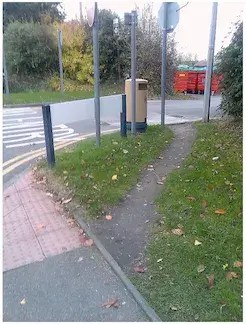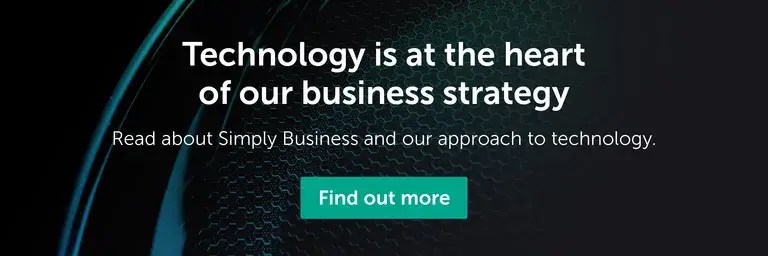When we talk about ‘understanding users’ and providing a ‘frictionless experience’, we are talking about alignment to a user’s desire path.
A desire path is the route which most people do or wish to take, regardless of how the current landscape has been intended to be navigated. You see manifestations of desire paths every day in the physical world (as in the image).

There are two things you can do with a desire path when it is not in alignment with what was originally intended. You can either block it; or embrace it. There is quite often a conflict between the desire path of a business and the desire path of customers. It’s generally not a good idea to completely block one of them off. This is where real innovation comes in. Creating something that provides a bridge permitting smooth passage for both paths.
I can think of two real world examples of this:
The first is for public transport in London, particularly busses. The desire path for the transport providers is to earn revenue for each passenger travelling. The desire path for a customer is to get from A to B as hassle free as possible. Payment has to occur for the business to run, but the process of paying is a deviation from the desire path of the customer. (Getting out the right change, giving it to the bus driver, or waiting for change from the driver). Customers do not ride for the experience of paying.
Oyster cards are an example of great innovation where it provides a bridge for both paths. The bus earns revenue, and the customer has a much more frictionless experience. Everyone wins.
Once you are aware of and understand the desire paths – you can extrapolate and innovate along it to generate intelligent hypotheses.
What would be an example of doing that?
We could hypothesise that it would be a better customer experience to remove barriers from tube/train stations altogether and use camera facial recognition to automatically identify and charge people’s accounts.
Do we know for sure if this would actually work? No. That’s why it’s a hypothesis. In this facetious example probably would hate such a big-brother-esque idea. But the point is that it’s potentially even more in alignment with the customer’s desire path than using an Oyster card (except obviously for those who are trying to sneak-in free rides). Thinking in this way allows you to try out different aligned hypotheses and find the ones that work.
The interesting and important thing however, is that many customers often don’t know their own desire path until they’ve started taking it and realising how bad the old route was comparatively. This is our job as innovators – and is the basis for the quote often attributed to Henry Ford “If I asked my customers what they wanted, they’d have said a faster horse” (He manufactured the first affordable motor car).

My second example is of music. It is frequently a desire path for many people who enjoy music to listen to any song they have thought of immediately – whilst it’s stuck in their head, or they’re in that particular mood. Having to go to a shop and buy the CD is not very aligned with the desire path. If you already have the CD, rifling through your collection and putting it into the CD player is a bit closer.
With the advent of the internet; how did many geeks (or in this case ‘pre early-adopters’) follow the desire path? Illegally downloading songs.
There was a time when the closest thing to this desire path (listening to a song immediately) was to illegally download it. How did many companies try and deal with this? DRM (Digital Rights Management).
This is not great innovation because it blocks one of the desire paths.
The likes of iTunes, massively refined the industry towards the desire path but still has the friction of going through a payment process each time you want to listen to something you don’t have. We now have Spotify (and similarly YouTube) who have closely embraced both desire paths. Of course, the jury’s still out on the financial model, but it’s great innovation. People can listen to songs immediately AND people get paid. Everyone wins. Both desire paths closely satisfied. Again most people didn’t really know they wanted something like Spotify or YouTube until they existed. (that is, most people, not all)
Can the music desire path be extrapolated? Humming / whistling a song and your portable device plays it? How about being able to just think of a song and it plays? Whatever, they’re all hypotheses. Of course the limitation is what is technically possible right now, but if you’ve already identified the desire path then you’re ahead of the game and are possibly even in a position to drive forwards what is ‘technically possible right now‘.
It’s important to ask yourself if you are really identifying the desire paths of your customers – are you empathising with their real needs and innovating accordingly? When forming a new hypothesis on your products or services, you need to consider; will this refine at least one desire path or will it block one?
Written by
Ready to start your career at Simply Business?
Want to know more about what it’s like to work in tech at Simply Business? Read about our approach to tech, then check out our current vacancies.